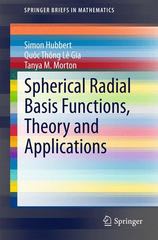Problem 1 (a) Let Y be a random variable with the following distribution f (y): ----n y) 0.1 0.2 0.1 0.6 compute the standard deviation of Y. (b) The proportion of people who respond to a certain mailorder solicitation is a random variable X having the density function given as fX(:L') = {g' 0 S x S 1' 0, otherwise. Find the variance 0%; of X. The set of ordered pairs (x, f(x)) is a probability function, probability mass function, or probability distribution of the discrete random variable X if, for each possible outcome r. 1. f(x) 20, 2. Ef(x) = 1, 3. P(X = x) = f(a). The cumulative distribution function F(x) of a discrete random variable X with probability distribution f(x) is F(x) = P(X
f(t), for - 00 (x -4)?f(x), if X is discrete, and o' = E[(X - ")3] = / (x -1)?f(x) dx, if X is continuous. The positive square root of the variance, o, is called the standard deviation of X.The variance of a random variable X is 0? = E(X?) - 12. The covariance of two random variables X and Y with means /x and My, respec- tively, is given by Oxy = E(XY) - Axly. Let X and Y be random variables with covariance oxy and standard deviations x and Ty, respectively. The correlation coefficient of X and Y is OXY PXY = Oxy If a and b are constants, then E(aX + b) = aE(X) +b. If X and Y are independent random variables, then Taxtby = abox +blo?. Let X and Y be two independent random variables. Then E(XY) = E(X)E(Y). Setting g(X, Y) = X and h(X, Y) = Y, we see that E[X + Y] = E[X] + E[Y]. Binomial A Bernoulli trial can result in a success with probability p and a failure with Distribution probability q = 1-p. Then the probability distribution of the binomial random variable X, the number of successes in n independent trials, is Mxin, p) = (")pg"-z, = =0,1,2, ..., n. The mean and variance of the binomial distribution b(x; n, p) are # = np and o' = npq. Hypergeometric The probability distribution of the hypergeometric random variable X, the num- Distribution ber of successes in a random sample of size n selected from / items of which k are labeled success and N - & labeled failure, is h(z; N,n, b) = )() (N) max (0, n - (N - k)} s as min{n, k).The mean and variance of the hypergeometric distribution h(x; N, n, k) are nk and g? _ NV - n k N N - 1 N Geometric If repeated independent trials can result in a success with probability p and Distribution a failure with probability q = 1 - p, then the probability distribution of the random variable X, the number of the trial on which the first success occurs, is s(zip) = pq-, = = 1,2,3,.... The mean and variance of a random variable following the geometric distribution are #= = and 2 - 1 - p D p2 Uniform The density function of the continuous uniform random variable X on the in- Distribution terval [A, B] is f(z;A, B) = B-X. ASISB, 0, elsewhere. Normal The density of the normal random variable X, with mean a and variance of, is Distribution 1 -e i(-p), -00



















